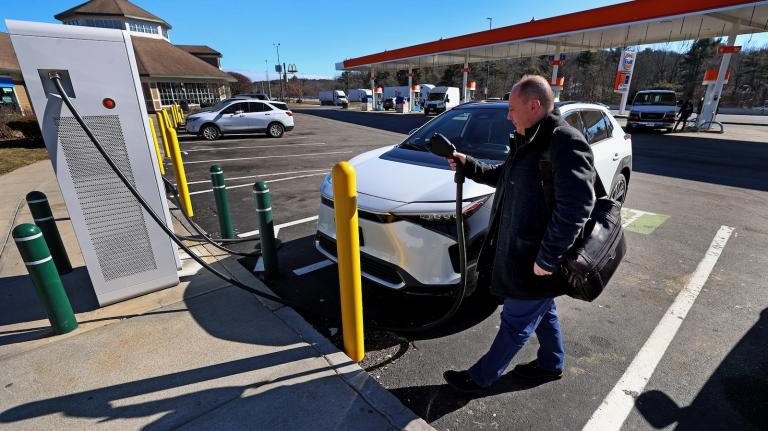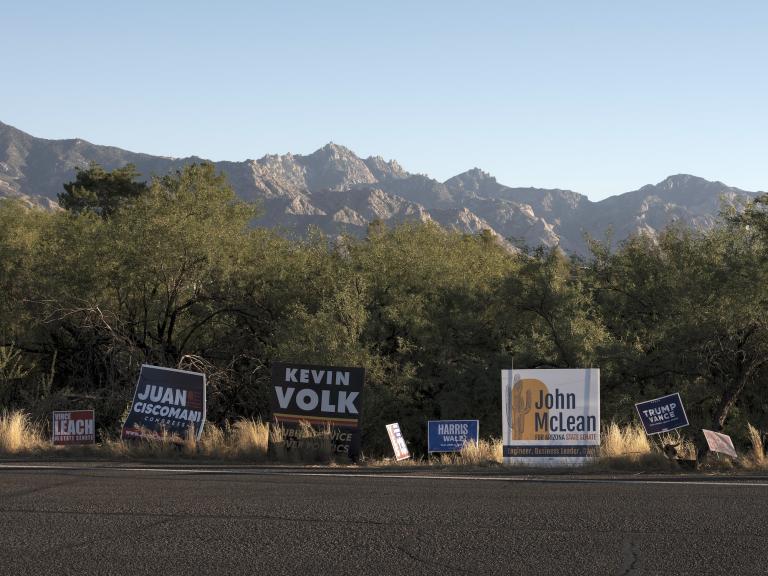
Steve Frillmann.
With what environmental organization are you affiliated?
I am the executive director of Green Guerillas, New York City’s oldest community-gardening group.
What does your organization do?
At Green Guerillas, we help people carry out their visions for what community gardens can be in a dense, vibrant urban area — urban farms, botanic gardens, performance spaces, community centers, lungs that help the city breathe.
Some of our activities are fairly simple, like giving gardeners a few seedlings. Some are very complex, like organizing coalitions or helping grassroots leaders fight to protect gardens from development.

New Yorkers appreciating a community garden.
Photo: Green Guerillas.
There are 600 community gardens in NYC, and none of them are “Green Guerillas” gardens. They were all created through the hard work and ingenuity of grassroots volunteers, and they are all independently cultivated. Numerous nonprofits and foundations also support the work of community-garden groups, so we are one part of the puzzle.
How do you get to work?
I take two subway trains.
What long and winding road led you to your current position?
In my earlier days, I volunteered for the Coalition for the Homeless and organized an association of store owners in a historic Brooklyn neighborhood. Then I ran a program of training workshops and small grants for grassroots groups, including community-garden groups. That’s what led me to Green Guerillas.
I am not a gardener myself, and I was not really attracted to Green Guerillas because of the positive environmental impact of community gardens. I was interested in helping community gardeners as neighborhood leaders and community builders. I believed community gardening was the most unique community-development tool I had ever seen. It’s been 10 years, and nothing has shaken that belief.
Where were you born? Where do you live now?
New York City — I was born in Queens and now live in Manhattan.
What environmental offense has infuriated you the most?
When then-mayor Rudy Giuliani attempted to sell 115 community gardens to the highest bidders in 1999. Luckily his desire was not realized.
Who is your environmental hero?
There are dozens of community gardeners in New York City who are my heroes. The work they have done — often against all odds — is remarkable.
What’s your environmental vice?
I am a city kid — if I can’t have concrete under my feet, I need lots of it nearby.
How do you spend your free time (if you have any)?
Walking on the above-mentioned concrete, with my head up, looking for adventures.
What’s your favorite meal?
Chipirones (squid in black ink), salad, crunchy bread, red wine.
Which stereotype about environmentalists most fits you?
I believe that big business and most politicians will not act in a way that’s good for the earth unless forced to.
If you could institute by fiat one environmental reform, what would it be?
I would create a program in every city that would ensure small-scale community-initiated projects — such as community gardens, rooftop gardens, neighborhood farmers’ markets, etc. — have all the funding and legitimacy they needed to succeed.
If you could have every InterActivist reader do one thing, what would it be?
Whatever your cause — stand your ground, pitch a tent, and invite people in who are willing to do hard work: wild-eyed idealists, pragmatists, activists, lawyers, planners. Don’t get too caught up on consensus, and don’t get discouraged by conflict. You can get a lot done together while disagreeing on important points along the way.

